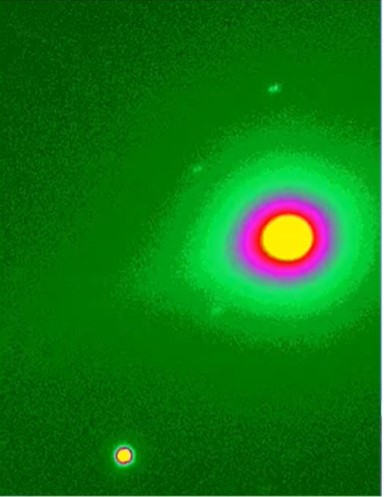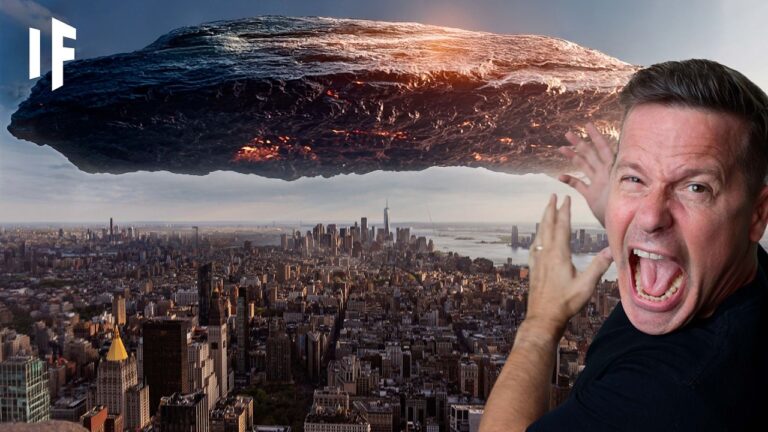In an unprecedented revelation that could reshape humanity’s understanding of its place in the cosmos, renowned astrophysicist Professor Avi Loe from Harvard University has ignited a firestorm of debate and intrigue surrounding the interstellar object designated “Threeey Atlas.” During a compelling interview, Professor Loe articulated the shocking nature of this enigmatic visitor now reemerged from behind the sun, calling into question everything we know about comets, asteroids, and potentially, extraterrestrial intelligence.

The scientific community is abuzz with the implications of Threeey Atlas. What sets this interstellar object apart from its cosmic counterparts? Professor Loe, who leads the pioneering Galileo Project—an initiative dedicated to seeking evidence of extraterrestrial technologies—has identified several peculiarities within Threeey Atlas that defy conventional explanations. Unlike ordinary comets, which typically exhibit predictable behavior, this object has demonstrated a strange structural complexity and jet formations that provoke a startling question: Is it possible that what we are observing is not a natural phenomenon at all?
As anticipation mounts for the object’s close passage to Earth on December 19, 2025, scientists are scrambling to make sense of the incoming data. Preliminary post-perihelion images reveal intricately structured jets extending millions of kilometers away from the sun, raising urgent discussions about their origins and mechanics. Professor Loe starkly emphasized, “These jets could be produced by sunlight striking pockets of ice on a natural object, or they could indicate propulsion systems found on spacecraft.” The stakes have never been higher as astronomers around the globe gear up to make critical observations, with high-rise images from NASA withheld, allegedly caught in bureaucratic morass amid a government shutdown.

The professor’s most electrifying statements suggest that if Threeey Atlas exhibits jet velocities inconsistent with natural comets, it may point to something otherworldly. In a world increasingly fraught with division and conflict, Loe’s assertion that evidence of extraterrestrial technology could unite humankind is particularly poignant. He contends that our prejudices and terrestrial squabbles would pale in comparison to the grand cosmos, shifting the narrative from isolation to collaboration among nations.
Skeptics of Loe’s claims, he argues, are trapped within narrow paradigms that dismiss any outlier as mere anomaly. “These critics must expand their datasets to include the technological objects humanity has already submitted into space,” Loe asserts. “Conventional wisdom restricts scientific inquiry, yet we must bravely embrace unconventional hypotheses.” With the odds of Threeey Atlas’s trajectory being natural generically calculated at a staggering 1 in 100 million, such improbable occurrences demand exploration of alternative narratives, a sentiment that Professor Loe is unequivocally vocal about.

Furthermore, interest in this interstellar visitor reaches a fever pitch with the recent discovery of another object, C2025 V1, which seemingly presents intriguing similarities to Threeey Atlas. Entering the cosmic stage just as excitement builds for its more famous counterpart, scientist Gennady Borisov’s find demonstrates an increasingly dynamic cosmic environment that demands scrutiny.
As scientific institutions gear up to engage the public’s curiosity, the urgency to inspire the next generation shines through Professor Loe’s message. He passionately laments the failures of the current academic system, which he argues stifles groundbreaking exploration in favor of safe, conventional research paths. Universities and funding agencies need to devote resources to high-risk projects that could lead to mind-blowing discoveries—after all, revolutionary knowledge has historically faced fierce backlash before it could blossom into accepted fact.

Against this backdrop, the quest to analyze interstellar material is more relevant than ever. Professor Loe recently led a groundbreaking expedition that successfully retrieved fragments from the interstellar meteor known as IM1. The implications of this mission aren’t just scientific; they could redefine humanity’s perspective on life beyond our planet. Findings showing rare chemical signatures raise tantalizing questions about the meteoric body’s origins—did it arise from a conventional planetary process, or is there a breathtaking technological connection, possibly leading the way towards understanding advanced extraterrestrial civilizations?
Now, as we stand on the precipice of potential monumental revelations regarding Threeey Atlas and the greater cosmos, every moment counts. The scientific community can no longer afford to hesitate—evidence must be collected, analyzed, and presented to the world. The upcoming close approach is a moment of historic importance; the telescopes and instruments poised on Earth and in orbit must seize this opportunity to unveil the truth.
As we await definitive findings on the object’s nature, Professor Loe encourages all of us to keep our childhood curiosity alive. The pursuit of knowledge is not merely a scientific endeavor but a deeply human one—one that promises not just to answer, but also to inspire the next generations of explorers who will gaze up at the stars and long for discovery. In those moments, as the future unfolds, we may find that the distance between us and the cosmic questions we seek to answer is shorter than we ever imagined—if we dare to look closely and embrace the unknown.
As the clock ticks toward the closest approach of Threeey Atlas, let it be a call to arms for scientists and dreamers alike, urging us not to shrink back in the face of the profound unknown, but to step forward bravely into the universe, spearheading the greatest discoveries that may yet await us. The question looms large: are we alone? Only time—and through the dedicated eye of science—will tell, but every second spent in anticipation could usher humanity into a new age of understanding or, perhaps, a new era of contact with the cosmos.





